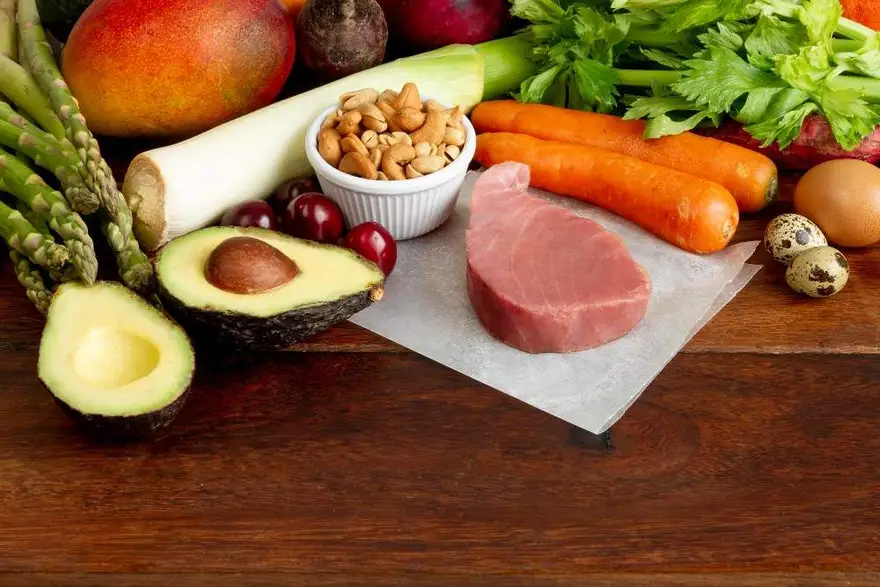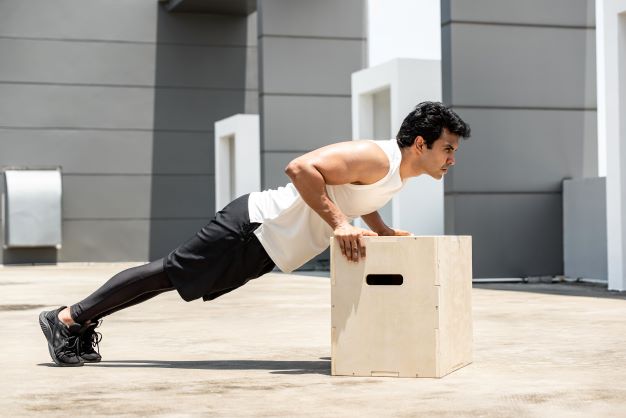Preventive Healthcare
Guide To Gallstones (Cholelithiasis)

Table of Contents
- What are Gallstones?
- What is Cholelithiasis?
- How Common are Gallstones?
- What are the Types of Gallstones?
- How Does Having Gallstones (Cholelithiasis) Affect Me?
- What is the Leading Cause of Gallstones?
- What Else Causes Cholelithiasis?
- What are the Symptoms of Gallstones?
- What is Gallstone Pain Like?
- How are Gallstones Diagnosed?
- What Tests are Used to Diagnose Cholelithiasis?
- Does Cholelithiasis Require Surgery?
- Can Gallstones Go Away Without Surgery?
- How are Gallstones Removed?
- What Happens When You Don't Have a Gallbladder Anymore?
- Will I Need to Change My Diet After Gallstone Surgery?
- What is my Prognosis If I Have Gallstones (cholelithiasis)?
- When Should I Seek Care for Gallstones?
- Conclusion
What are Gallstones?
Gallstones are hard deposits of your digestive fluid formed in your gallbladder. These gallstones are pebble-like pieces made up of your bile materials. Your bile contains cholesterol, bile salts, bilirubin and lecithin. Gallstones are made up of bilirubin and cholesterol that accumulate at the bottom of your gallbladder until they become hard like stones.
These gallstones can be as small as grain size or as big as a golf ball. These stones' size increases gradually as the bile is washed over them, and the extra material accumulates over these stones. Usually, small gallstones cause more trouble, as being smaller in size, it becomes easy for them to travel. These tiny mobile stones can get stuck somewhere, causing blockage.
What is Cholelithiasis?
When your gallbladder contains gallstones, then that condition is known as cholelithiasis. Many people with cholelithiasis are unaware of their condition as gallstones, usually, will not give you any trouble. Therefore, if these stones do not create any problems, it is better to leave them as they are. However, these gallstones can result in blockage, causing inflammation and pain in your organs like pancreas and gallbladder. If left untreated, such a condition can result in complications like gallbladder cancer, jaundice, infection in bile ducts, etc.
How Common are Gallstones?
Gallstones are very common affecting 10% of adults and 20% of people with an age of 65 and above. But only 20% of people need treatment for this.
What are the Types of Gallstones?
There are two gallstone types:
- Cholesterol stones: These gallstones are yellow-green and are made up of undissolved cholesterol. But these gallstones may also contain other substances like bile salts and bilirubin.
- Pigment stones: These gallstones are primarily brown and are made up of bilirubin. People who get these gallstones usually have liver diseases or blood disorders like anaemia or leukaemia.
Some people may have both cholesterol and pigment gallstones in their gallbladder.
How Does Having Gallstones (Cholelithiasis) Affect Me?
A gallstone can travel to the mouth of your gallbladder and can hinder the path of bile. Otherwise, it may even surpass the gallbladder, reaching into the bile ducts, where it can block the bile flow through the ducts. This sends the bile back to the nearby organs, creating pressure, and you may sense pain in your organs and bile ducts, causing inflammation. Such condition may give birth to various complications, including:
- Gallbladder disease: Gallstones are mainly responsible for gallbladder disease. When these gallstones are stuck, your bile will return to the gallbladder. With time, this condition will cause long-term damage to your gallbladder, scratching the tissues and affecting their functioning. The reverse flow of bile can also create infection in the gallbladder.
- Liver disease: The blockage at any place of the biliary system can send the bile into your liver. It will lead to liver inflammation, which may cause infection in the liver with long-term scarring. If the functioning of your liver is affected, it will break your whole biliary system. You can live without a gallbladder but not without a liver.
- Gallstone pancreatitis: If the gallstone blocks the pancreatic duct, it will cause inflammation in your pancreas. Like any other organ, you will feel pain in your pancreas, and if gallstone remains in the pancreas for a long time, it will damage your organ.
- Jaundice: Your bile contains toxins that the liver has filtered from the body. If the bile leaks into your bloodstream, it will make you sick. Bilirubin has yellow colour content, and this will make your eyes look yellowish.
- Malabsorption: Your bile is responsible for breaking down fats and absorbing vitamins in your small intestine. The bile is intended to travel to your small intestine, and if it is blocked, your body will face difficulty in absorbing nutrients from the food.
What is the Leading Cause of Gallstones?
Cholesterol is one of the leading gallstone causes —75% of the gallstones that healthcare providers identify are made up of cholesterol. So, eating an excessive diet that is high in cholesterol can lead to gallstones. Moreover, there is a wide array of reasons for extra cholesterol due to metabolic disorders like diabetes and obesity.
With high cholesterol in the blood, your bile will contain a higher cholesterol content. So, when your liver filters the cholesterol from the blood, it gets deposited in the bile as waste. This bile then reaches the gallbladder. In normal conditions, the chemical present in the bile dissolves the cholesterol. But if your body contains a higher amount of cholesterol, it will become difficult for the body to dissolve it completely.
What Else Causes Cholelithiasis?
Some other factors that cause cholelithiasis include:
- Excess bilirubin: Around 25% of gallstones comprise excessive bilirubin. Bilirubin is a byproduct when our liver breaks down the red blood cells. Due to certain body disorders, your liver may produce excessive bilirubin if it is not functioning correctly. Such disorders include Gilbert's syndrome, liver disease, and blood disorders.
- Gallbladder stasis: Your gallbladder receives a signal from the small intestine to send bile when the intestine contains fats to digest. In normal conditions, your gallbladder will contract enough to move bile quickly. But if the gallbladder does not contract efficiently, it may leave some bile behind. This bile will gradually concentrate and crystallise to form gallstones.
Who Gets Gallstones?
Anyone can get gallstones, including children, but it is most common in people who are above 40. This is because gallstones take time to grow. It may take 10-20 years for gallstones to become large and create an obstruction. Females are at more risk of getting gallstones rather than males. The reason behind this is the number of pregnancies, as sex hormones increase the risk of gallstones in females. Some other common risk factors are:
- Native Americans: These people are at more risk of gallstones because of their genetic profile.
- Metabolic syndrome: Metabolic risks like being overweight, high blood triglycerides, or insulin resistance may lead to cholesterol gallstones.
Why are Women More at Risk of Developing Gallstones?
Estrogen enhances the cholesterol in women's bodies, and due to progesterone, gallbladder contractions slow down. Both these hormones are high in women due to reproductive life, such as pregnancy and menstruation. With the decrease in hormone levels due to menopause, many women start taking Hormone Therapy (HT) to replace them, and this again increases the risk of gallstones.
Due to these hormone changes, women are more likely to frequently experience changes in body fat—excessive fat results in extra cholesterol in your blood as obesity increases the estrogen level. Also, too much weight loss at once sends excess cholesterol to the liver for processing, which ends up in your bile.
What are the Symptoms of Gallstones?
Gallstones will remain unnoticed until they get stuck somewhere in your body and result in blockage. In such conditions, the most common symptom is abdominal pain in the upper right side of your abdomen, called Biliary Colic. Such pain happens in episodes lasting several hours, usually after your meal. It is the condition when your gallbladder needs to contract to send bile towards the small intestine for digestion.
Occasional pain episodes in your body indicate a partial blockage, but you won't feel the pain until the gallbladder contracts. These contracts exert pressure through your bile ducts, which build up during blockage. So, this is an alarming sign for you. If the blockage becomes more severe, your pain will increase.
What is Gallstone Pain Like?
You can feel the gallstone pain in the upper right side of the abdomen, under your ribcage, where the gallbladder is located. But you may often feel the pain more vaguely, radiating at other locations, like in your right arm or shoulder blade. This will start gradually as an ache and become more intense in the first hour before it recedes again.
Gallstones' pain will never become sharp like waves. It will proceed slowly and steadily and is usually dull but severe. So, there is a possibility that you may need to spend some time in the emergency room to get relief from pain. Moreover, you can also notice the tenderness of your upper right abdomen during pain. Such pain is often accompanied by vomiting and nausea. This condition is also called a 'Gallbladder Attack'.
Do Gallstones Cause Other Symptoms?
When the gallstone has caused blockage or infection in your body, you may experience symptoms of acute inflammation. Such symptoms include:
- Persistent pain
- Chills and fever
- Acceleration in heart rates
You may also experience some symptoms of accumulation of bile in your bloodstream like:
- Jaundice
- Dark coloured eye
- Sunken eyes
How are Gallstones Diagnosed?
If you experience symptoms of biliary colic (gallbladder pain), your healthcare provider may suggest imaging tests and blood tests like liver function tests, complete blood count tests, etc. Through such tests, your doctor will get an idea about the organs affected by gallstones. On the other hand, imaging tests can know about the blockage location. Imaging tests usually start with an ultrasound.
What Tests are Used to Diagnose Cholelithiasis?
There are mainly three types of diagnosis tests namely ultrasound, MRCP and ERCP. Let's take a look at the below points before knowing about these tests in detail:
- The first step is to perform an ultrasound to locate the gallstone.
- If a gallstone is hidden in the bile duct, then your doctor will recommend another type of imaging test, which is MRCP (Magnetic Resonance Cholangiopancreatography). In case your doctor confirms that gallstone is present in the gallbladder, then they will skip MRCP and directly proceed with ERCP.
- ERCP (Endoscopic Retrograde Cholangiopancreatography) is used to locate the stone in the gallbladder and remove it from ducts.
Now, let's know about such diagnostic tests in detail:
- Ultrasound: Your doctor will prefer abdominal ultrasound, which is a non-invasive process and does not require any medication or preparation. It is done to locate gallstone.
- MRCP: It is a kind of MRI to get a clear view of bile ducts. This non-invasive process will give your doctor a clear picture of the biliary system, including the common bile duct. Your doctor may do this imaging test first to find the suspected gallstone there.
- ERCP: It is an invasive process and is a combination of endoscopy and X-ray. It involves inserting a long tube containing a tiny camera at the end into your throat to reach the upper GI tract. When the camera reaches your small intestine, your healthcare provider will insert another small tube into the first one to reach down into your bile ducts. A special dye will be sent into your body through the second tube to take clear X-ray pictures and the video as the dye reaches through the ducts. Your doctor can also insert tools through the tubes to remove the gallstones.
Does Cholelithiasis Require Surgery?
Many people with gallstones never need any gallstones treatment. But if these gallstones are causing trouble, then your healthcare provider will suggest removing them. Usually, gallstone therapy involves the removal of all the gallstones, even if the problem is caused only by one of them. After all, if the blockage has happened once, it may happen again. Therefore, the healthcare professional suggests not taking risks and waiting until the condition worsens.
As there is no way to reach out the gallstones inside the gallbladder and remove them completely, the standard gallstone treatment is to remove your gallbladder. It involves minor surgery, and you can live a healthy life even without your gallbladder. If the stones are also in your bile ducts, your healthcare provider can remove them separately.
Can Gallstones Go Away Without Surgery?
If you are lucky enough, your gallstones in the bile ducts (which are not stuck) will pass on naturally through your intestine. Then, it will exit from your body through stools. But usually, it is not advised to take this risk; if they don't pass, they will eventually grow with time.
Therefore, certain medications will help you dissolve small stones. However, these medicines take several months to dissolve the gallstones, so this option is impractical for patients experiencing gallstone symptoms. Having said that, this option is suitable for those people for whom surgery is not advisable because of age or any other medical conditions. Surgery is a preferred option for people who have gallstones but have not experienced the gallstones symptoms yet.
How are Gallstones Removed?
There are various options to remove gallstones; some of them include:
- Endoscopy
Gallstones in the bile ducts can be removed through endoscopy. This non-invasive process involves passing a long tube containing a camera through your throat.
- Laparoscopy
In this technique, a small keyhole incision is made in your abdomen to insert a tiny camera called a laparoscope. Your surgeon will insert a camera through the hole and will remove your gallbladder. As the hole is small, you will experience less pain post-operation with fast recovery compared to conventional 'open' surgery.
- Open surgery
Open surgery is recommended in case of more complications that are difficult to manage through endoscopy or laparoscopy. During this open surgery, your surgeon will make a 6-inch incision in your abdomen below the ribs on the right side and will pull your muscles and tissues to access your gallbladder and liver. He will then remove the gallbladder. In open surgery, you need to stay in the hospital longer.
What are the Complications or Side Effects of Gallstone Surgery?
You may experience some gas pain after laparoscopic surgery. You can experience such pain ever after ERCP. In both procedures, gas is pumped into your organs to expand them to allow doctors to get a better picture of those organs. The gas from your body will pass in a day or two. Therefore, complications after the operation are rare. However, some people may get an infection, bleeding, or injury to nearby organs.
How Long is the Recovery From Gallstone Surgery?
In case of laparoscopic surgery, you can go home within 24 hours. In this procedure, complete recovery will take around 2 weeks. In case of open surgery, you must stay in the hospital for 3-5 days post-surgery. Your recovery at home will take 6-8 weeks and 6-8 weeks for your digestive system to adjust.
What Happens When You Don't Have a Gallbladder Anymore?
Even without a gallbladder, your digestive system will work absolutely fine. The primary function of your gallbladder is to hold the bile your liver makes. It passes the bile to the small intestine for digestion. When your surgeon removes the gallbladder, they will redirect the bile duct so that the bile will directly flow to the small intestine from your liver.
Will I Need to Change My Diet After Gallstone Surgery?
It will take some time for your digestive system to adjust without a gallbladder. So, you may experience diarrhoea or indigestion for some days. Therefore, it is recommended not to eat a fatty and rich diet during the recovery period. Nevertheless, you can return to your regular diet after a few weeks.
Gallstones Diet
The amount of fat you will include in your diet after gallstone surgery may cause diarrhoea, gas, and bloating. Although there is no specific gallstone diet after surgery, following the below-mentioned diet will reduce your problem of bloating or diarrhoea after gallbladder removal:
- Eat less fat: Avoid eating greasy foods, high-fat foods, fatty sauces, or gravies at least for a week after surgery. You must go with low-fat foods like lentils, skinless chicken breast, berries, white eggs, etc. Low-fat food means it should not contain more than 3 grams of fat in one serving.
- Increase fibre: Fiber-rich food will help you in regular bowel movements. Take soluble fibre like barley and oats in your diet. Moreover, you must increase the fibre intake gradually, as too much fibre at once may worsen the gas in your body.
- Eat smaller and more frequently: This habit will ensure a gradual mix of food with bile. Your meal should include lean protein like poultry, fat-free dairy, fish, fruits, vegetables and whole grains.
- Also, you must avoid food or drinks, which can worsen diarrhoea. These include:
- Very sweet foods
- Caffeine
- Dairy products
You must contact your healthcare provider if your diarrhoea does not go away even after following a fat-free diet.
What is my Prognosis If I Have Gallstones (cholelithiasis)?
If your gallstones are not causing any trouble, they probably won't do so in the future, as the possibility of asymptomatic gallstones becoming symptomatic is 2%. However, once you start getting symptoms, you are most likely to experience them in the future. Around 2% of symptomatic gallstone patients experience yearly complications, like acute inflammation or infection.
With proper surgical treatment of gallstones, most of the patients recover from this condition altogether. Some people may still get this problem later in their life, and it can be treated through endoscopy. Moreover, taking medicines to dissolve gallstones will work 75% of the time, but these gallstones will often come back again.
When Should I Seek Care for Gallstones?
If you are experiencing pain in your abdomen, then you must seek medical advice immediately. This biliary pain is persistent and dull. It will remain there for around 20 minutes or may last for several hours. You will usually feel the pain on the upper right side of the abdomen.
Conclusion
Gallstones are common, and most people will never notice them until they start moving. Once they start moving, they become dangerous for your health. Your doctor may recommend certain blood tests like complete blood tests or liver function tests to know more about your gallstone condition. If you are experiencing any symptoms, get yourself tested with Metropolis. It is a leading pathology lab that offers home sample collection services. So, you can enjoy pathology services from the comfort of your home.









































